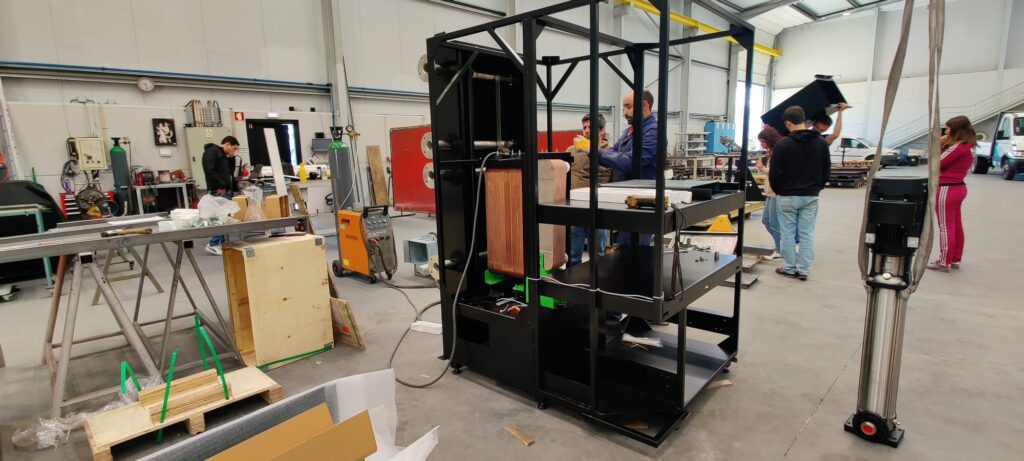ORGANIC RANKINE CYCLE
SCIVEN ORC
REVOLUTIONIZING THE WAY
WE USE ENERGY
Integrating the SCIVEN ORC into a setup unlocks various solutions, such as generating energy from heat streams above 70°C and 50 kW of thermal energy.This innovative technology efficiently recovers energy in processes where conventional solutions fall short, accommodating a wide range of industrial and service applications involving heat.
SAVE MONEY
Efficiently Generating Electricity from Available Thermal Energy Sources
The SCIVEN ORC uses thermal energy as an input for the ORC, turning the temperature difference between a heat source and sink into electricity.
Depending on customer needs, the system can be optimized to maximize electricity production efficiency when residual thermal energy is unnecessary. However, it also offers the flexibility to utilize this leftover thermal energy for low-temperature processes.
This dual functionality within a single installation ensures maximum efficiency and adaptability to meet diverse energy needs.

Small-Scale Cogeneration with SCIVEN ORC
Energy Efficiency at Its Best
Small-scale cogeneration systems, as opposed to large-scale megawatt-level systems, are perfectly suited for a wide range of applications.
They offer long-term cost savings by maximizing efficiency, they require less fuel to produce the same amount of energy. Plus, they generate excess heat that can replace the need for separate heating systems.
Synergizing Sustainability
Unlocking energy efficiency with a Green Power Duo
This dynamic duo harnesses the power of organic working fluids and renewable biomass fuels to generate electricity and heat in perfect harmony.
SCIVEN ORC operates by utilizing low-grade heat sources, making it possible to produce electricity from heat above 70 degrees and 50 kW. When integrated with a biomass boiler, it takes energy efficiency to the next level.
Here are the standard specifications for each SCIVEN ORC unit under nominal conditions.These specifications cover the general range of SCIVEN ORC units.
| HEAT SOURCE | HEAT SINK | ELECTRICAL OUTPUT | Other Specification |
|---|---|---|---|
| Intel Temperature:70-300ºC Outlet Temperature: 60-290ºC Thermal Power: 60-290ºC Medium: Water, steam, oil Diameter: DN50 PN16 | Intel Temperature:15-40ºC Outlet Temperature: 25-50ºC Thermal Power: 45-450 kW Medium: Water, air Diameter: DN50 PN16 | Peak electrical power:5-50 kW Connection: 400V, 3ph, 50Hz, 60A | Data Interface:MODBUS and SCIVEN ISENSE cloud service Weight: 800-1500kg Lifetime: 15-20 years |
HOW IT WORKS?
EVAPORATOR
A heat exchanger transforms heat with the hight-pressure fluid inside the ORC circuit, passing it from undercooled liquid to superheated vapor.
TURBINE
The superheated vapor is then expanded in a turbine, causing it to rotate, thus producing clean electricity.
CONDENSER
A heat exchanger transforms useful heat with water e.g., from the condensation of the working fluid at low pressure.
PUMP
The pressure of the working fluid increased.



